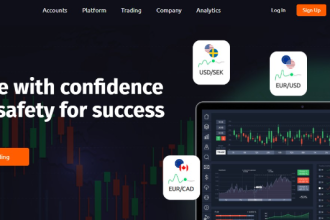In today’s healthcare industry, data analytics plays a crucial role in driving informed decision making and improving operational efficiency. Non-emergency medical transportation (NEMT) software, equipped with powerful analytics capabilities, offers valuable insights that can revolutionize the way healthcare organizations manage transportation services. This article explores the benefits and potential of harnessing NEMT software analytics to optimize resource allocation, improve patient care, and enhance overall efficiency.
Understanding NEMT Software Analytics
NEMT software analytics encompass a range of features that capture and analyze transportation data. From tracking vehicle movements and patient pickup times to monitoring driver performance and optimizing routes, these analytics functionalities provide organizations with actionable information. By understanding the types of data collected and ensuring data accuracy and quality, healthcare providers can unlock the full potential of NEMT software analytics.
Key Benefits of NEMT Software Analytics
The utilization of NEMT software analytics offers several key benefits. Firstly, it allows organizations to optimize resource allocation and route planning, leading to cost savings and improved operational efficiency. Secondly, by identifying transportation patterns and trends, healthcare providers can proactively adapt their services to meet patient needs. Thirdly, the ability to analyze data enables organizations to enhance service quality, patient satisfaction, and overall health outcomes. The potential for improving cost-effectiveness and efficiency is substantial.
Collecting and Storing Data
To leverage NEMT software analytics effectively, it is essential to collect and store data efficiently. This section explores the various methods and sources for data collection, ensuring data security and privacy, and integration with electronic health records (EHR) systems. Robust data collection and storage processes lay the foundation for accurate and insightful analytics.
Analyzing NEMT Data
Once the data is collected and stored, the next step is to analyze it to derive meaningful insights. This section delves into data visualization techniques for actionable insights, identifying outliers and anomalies, and performing statistical analysis and predictive modeling. With the right analytical tools and methodologies, healthcare organizations can uncover hidden patterns and trends that drive decision-making processes.
Making Informed Decisions with NEMT Analytics
Armed with valuable insights from NEMT software analytics, healthcare providers can make informed decisions to optimize transportation services. This section explores how analytics can be utilized to optimize transportation schedules, allocate resources based on demand patterns, and adapt to changing patient needs and preferences. By aligning decisions with data-driven strategies, organizations can enhance patient care, operational efficiency, and cost-effectiveness.
Case Studies: Real-World Examples
Real-world examples of organizations leveraging NEMT software analytics showcase the transformative impact of data-driven decision making. By highlighting success stories and their impact on efficiency, cost savings, and patient outcomes, these case studies demonstrate the tangible benefits of incorporating analytics into NEMT operations.
Overcoming Challenges and Best Practices
While NEMT software analytics offer tremendous potential, it is crucial to address challenges effectively. This section discusses overcoming data quality issues and limitations, ensuring staff training and data literacy, and collaborating with stakeholders for successful implementation. By adopting best practices and addressing potential obstacles, healthcare organizations can maximize the benefits of NEMT software analytics.

Future Trends in NEMT Software Analytics
Looking ahead, the future of NEMT software analytics holds even greater promise. Advancements in predictive analytics and machine learning will enable more accurate demand forecasting and resource allocation. Integration with emerging technologies such as the Internet of Things (IoT) and wearables will provide real-time data for proactive healthcare transportation. The potential for personalized and proactive care delivery through NEMT software analytics is immense. An example of an innovative NEMT software solution is RouteGenie, which offers advanced analytics capabilities specifically designed for healthcare transportation. With RouteGenie, healthcare organizations can leverage powerful algorithms and predictive modeling to optimize routes, minimize travel time, and improve overall operational efficiency.
Conclusion
In conclusion, NEMT software analytics offers a transformative approach to managing non-emergency medical transportation. By harnessing the power of data-driven decision making, healthcare organizations can optimize resource allocation, improve patient care, and enhance overall efficiency. Embracing NEMT software analytics empowers providers to make informed decisions that positively impact both their operations and the well-being of the patients they serve.
Remember to personalize the content, expand on each section, and cite relevant examples and sources to create a comprehensive article.















